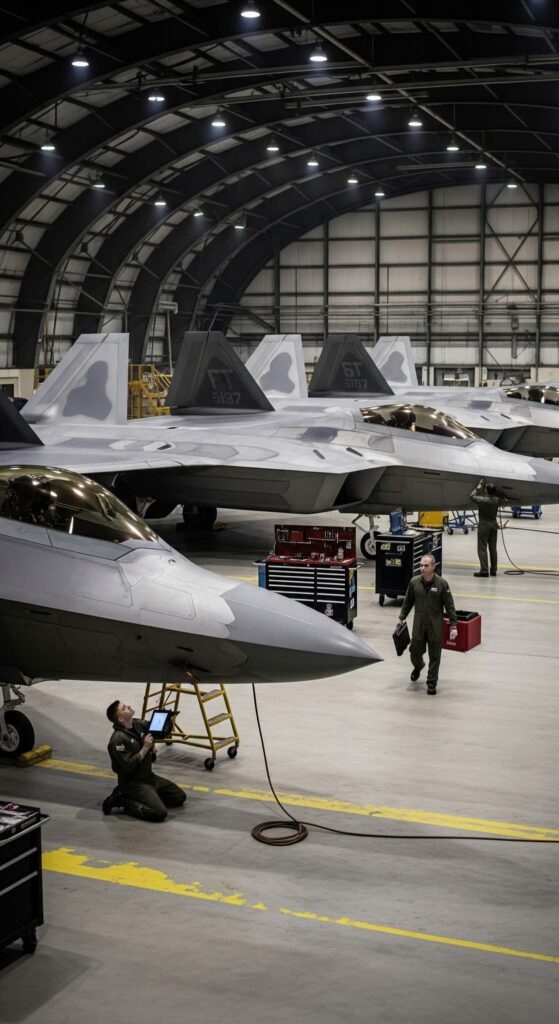
The F-22 Raptor is one of the most advanced fighter aircraft ever built, designed to secure and maintain air dominance in modern combat. Developed by Lockheed Martin in partnership with Boeing, the jet entered service with the United States Air Force in 2005. It combines stealth, agility, speed, and powerful avionics, making it a versatile platform capable of defeating multiple threats both in the air and on the ground.
The origins of the F-22 program trace back to the 1980s when the U.S. military sought a replacement for the aging F-15 Eagle. At the time, advancements in radar and missile technology meant that future fighters would need to be nearly invisible to detection. The result was the Advanced Tactical Fighter program, which produced two prototypes: the YF-22 and the YF-23. After rigorous testing, the YF-22 was selected for full production, eventually evolving into the F-22 Raptor.
One of the most defining characteristics of the F-22 is its stealth design. The aircraft’s airframe is carefully shaped to reduce radar signatures, while radar-absorbent materials further decrease visibility to enemy detection systems. Unlike earlier jets, the F-22 can fly into contested airspace, engage targets, and leave without being tracked, providing a decisive advantage in combat.
Performance is another key factor behind the Raptor’s reputation. Powered by two Pratt & Whitney F119 engines, the fighter can achieve supersonic speeds without relying on afterburners, a capability known as supercruise. This allows the F-22 to cover long distances at high speeds while conserving fuel and reducing its infrared signature. Combined with thrust-vectoring nozzles, the aircraft can maneuver with unmatched agility, allowing it to outturn and outfight potential adversaries.
In addition to its aerodynamic advantages, the F-22 is equipped with cutting-edge avionics. Its advanced radar system, the AN/APG-77, provides long-range detection and tracking of multiple targets at once. The jet can share data with other aircraft and command centers, strengthening the overall situational awareness of allied forces. Pilots benefit from a glass cockpit with modern displays, making it easier to process information and respond rapidly in combat.
Armament is also a major part of the Raptor’s design. For air-to-air combat, it can carry AIM-120 AMRAAM and AIM-9 Sidewinder missiles in internal bays, preserving its stealth profile. For ground attack missions, it can be equipped with precision-guided bombs. A 20mm M61A2 Vulcan cannon provides an additional weapon for close-range encounters. The combination of weapons and stealth ensures that the F-22 can handle multiple roles effectively.
Despite its impressive capabilities, the F-22 program faced challenges. High production costs limited the number of aircraft built, with only about 187 operational units delivered before the program ended in 2012. Still, those aircraft remain a core part of America’s air superiority strategy.
The F-22 Raptor is more than just a fighter jet—it is a symbol of technological dominance and a reminder of the importance of innovation in defense. While newer aircraft like the F-35 Lightning II are entering service, the Raptor continues to stand as one of the most formidable fighters in the world.


